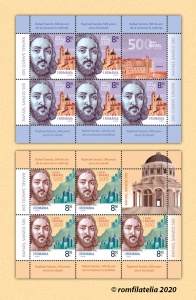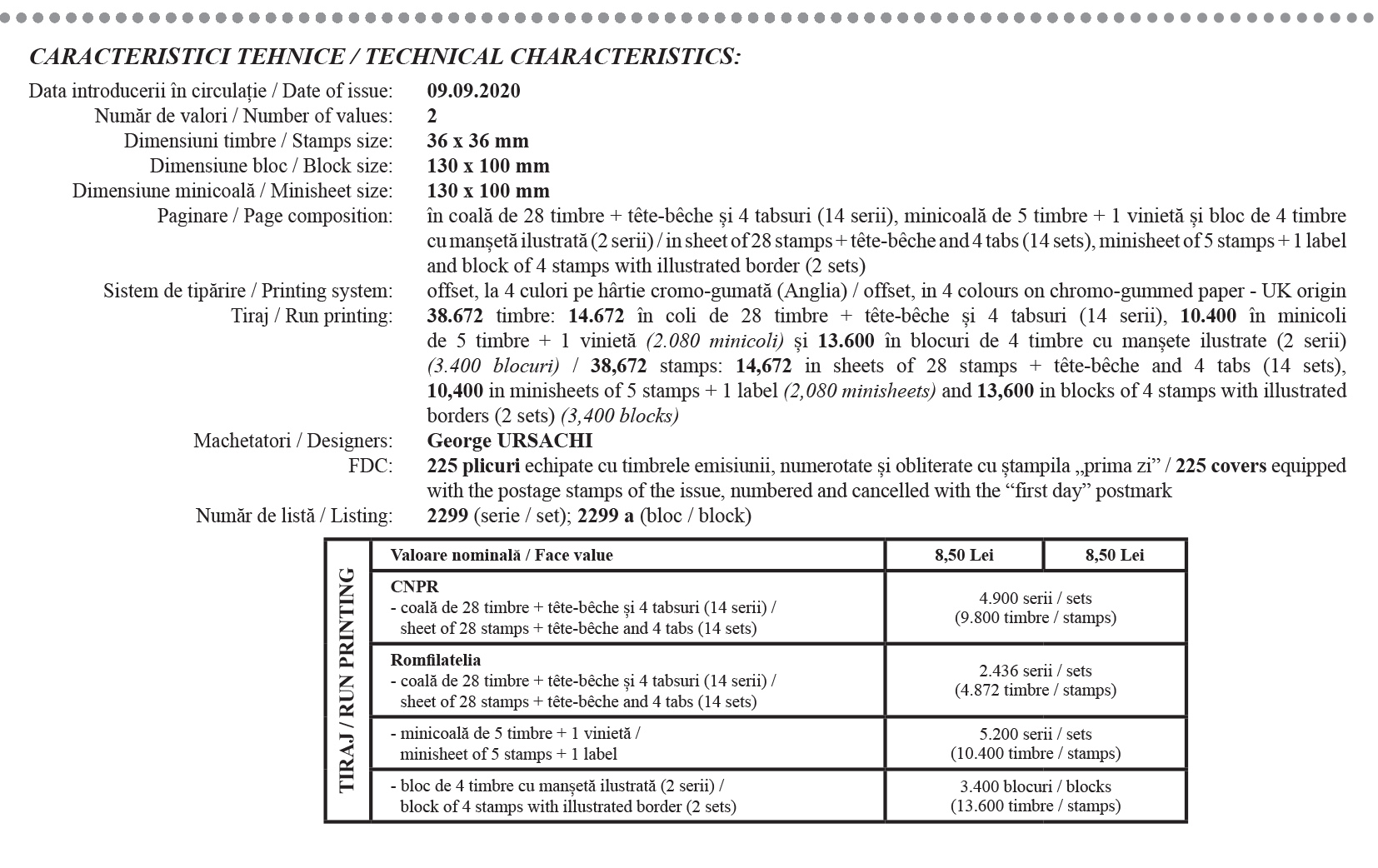Romfilatelia proposes to collectors a new topic dedicated to cultural events, through the postage stamps issue Raphael Sanzio, 500 years since his death, which will enter into circulation on Wednesday, September 9th, 2020.
Raphael was one of the representative artists of the Renaissance, famous for his “Madonnas”, including the “Sistine Madonna”, but also for the works that ennoble the apartments of the Vatican Palace in Rome.
Raphael Sanzio, also known as Raffaello, was born on April 6th, 1483, in the Italian city of Urbino, a cultural centre of the time, with aristocrats who encouraged art. The artist’s father, Giovanni Santi, was also a painter at the court of the Duke of Urbino. Orphaned at just 11 years old, Raphael took over his father’s workshop and began painting religious buildings in his hometown, coming to the fore by his original vision.
Around year 1500, he was received as an apprentice by Pietro Vannunci, a Renaissance artist from Perugia, also known as Perugino. Along with him, Raphael perfected his style of religious art during the years when he painted several churches in Perugia. During his apprenticeship, he also took philosophy lessons, being impressed by Plato’s writings, which significantly influenced Raphael’s artistic style.
In 1504, Raphael moved to Florence, where he watched the works of Renaissance titans such as Leonardo da Vinci and Michelangelo. In the Florentine years, Raphael painted the famous “Madonnas”, influenced by Da Vinci, but in an original style, that still impresses art lovers. Another famous painting made in Florence is “The Deposition”, influenced by Michelangelo.
Towards the end of 1508, Raphael was invited by Pope Julius II to the Vatican to decorate the old apartments of Nicholas V, the so-called “Stanze”. The first achievement was the decoration of the room “Stanza della Segnatura”, appreciated by the pope, who entrusted him with the decoration of the adjoining room, “Stanza di Eliodoro”, in which the achievements of the pontificate were glorified.
After 1514, when the famous artists of the time died or were removed from Vatican, Raphael remained the only one of the great Renaissance artists accepted in Rome by Julius II. Raphael led the architectural works of the Vatican, the “Lodges” and their decoration, the completion of the decoration of the Sistine Chapel, through a series of tapestries, to which are added numerous and remarkable private works.
Raphael also stood out for his architectural creation. In 1520, he built the “Branconio dell Aquila” palace in Rome, now lost, but also the plans of a vast villa for Giulio de Medici, the future Pope Clement VII, at Monte Mario, built between 1517-1525, a building still used by the Italian Ministry of Foreign Affairs.
Rafael Sanzio died on April 6th, 1520, the day he turned 37, in the heyday of his glory and creativity.
He suffered from a fatal heart failure, most likely caused by too much intense work. The pope organized lavish funerals, and his body was laid to rest in the Pantheon in Rome.
Portraits of the painter Rafael Sanzio are illustrated on the two stamps of the issue, with the face value of Lei 8.50.










